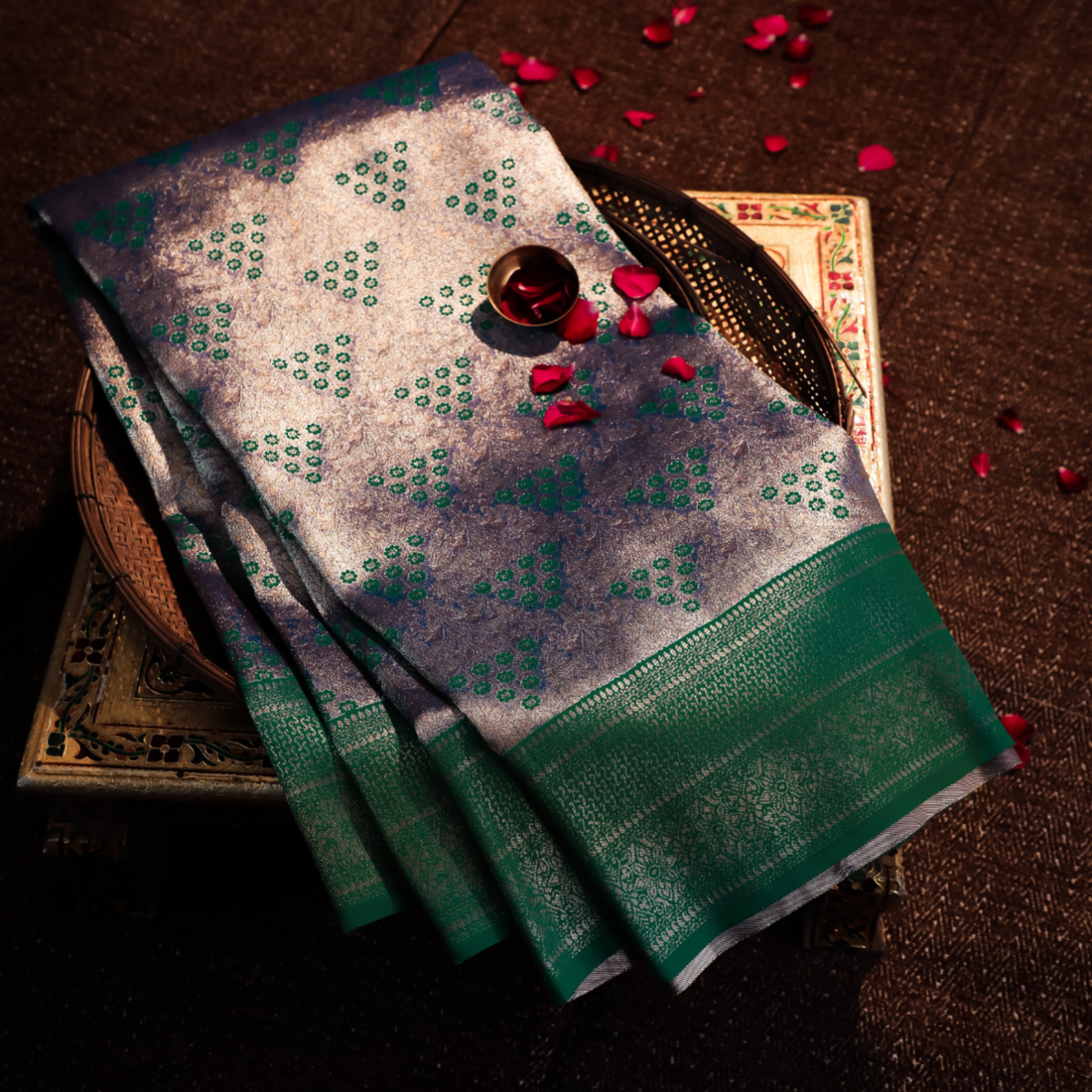
History of Kanchipuram Saree
Megha MuleKanchipuram Silk Saree: A Symbol of South Indian Elegance
Originating from the temple town of Kanchipuram in Tamil Nadu, the Kanchipuram silk saree is one of South India's most treasured traditional garments. Renowned for its elegance and durability, this saree is commonly worn at special occasions and ceremonies by women across Tamil Nadu, Kerala, Karnataka, and Andhra Pradesh.
What makes Kanchipuram sarees unique is the exquisite craftsmanship that goes into each piece. Handwoven with pure mulberry silk threads, it takes several days—sometimes even weeks—to complete a single saree. Most sarees feature a contrasting zari border, adding to their richness and beauty.
There are two types of zari used in these sarees:
-
Pure Zari: Made by twisting red and silver threads, then dipping them in gold to create a luxurious finish.
-
Tested Zari (Half Fine Zari): Electroplated with a gold solution to resemble pure zari, offering a more affordable alternative while retaining a similar look.
